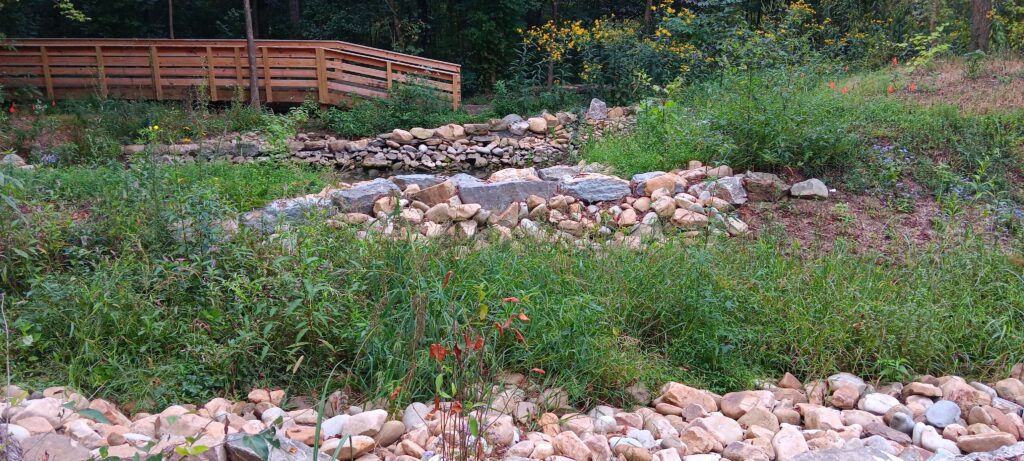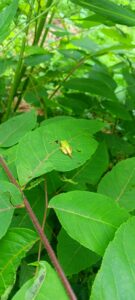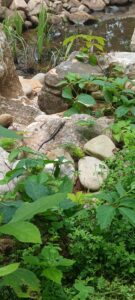By: Gillian Palino
In the ever-growing pursuit of sustainable solutions to environmental challenges, regenerative stormwater conveyances (RSCs) have emerged as a promising strategy for managing stormwater runoff. These innovative systems not only address water quality issues but also contribute to the restoration of ecosystems and the promotion of biodiversity. In this article, we will delve into the world of regenerative stormwater conveyances, exploring their features, functionality, and the positive impact they can have on our environment.
Stormwater runoff poses a significant threat to our waterways, carrying pollutants from roads, rooftops, and other surfaces into rivers and streams. Traditional stormwater management systems often involve concrete channels and pipes, focusing solely on moving water away from urban areas. However, these conventional approaches can exacerbate environmental issues by causing erosion, degrading water quality, and disrupting natural habitats.
Regenerative stormwater conveyances represent a paradigm shift in stormwater management. Unlike conventional systems, RSCs mimic natural processes to slow down, filter, and treat stormwater runoff, as seen in Figure 1. These systems are designed to work with the environment, promoting infiltration and vegetation growth to create sustainable and aesthetically pleasing landscapes.

Figure 1. General cross-section of an RSC design
Regenerative stormwater conveyances offer a compelling approach to managing stormwater, weaving environmental benefits into the fabric of our communities. They go beyond simply moving water. RSCs are living systems that can tame water’s power, clean it, and breathe life back into urban landscapes.

Key Components of RSCs:
1. Biofiltration: RSCs use soil and vegetation to filter pollutants from stormwater. The soil acts as a natural filter, trapping sediments and pollutants while allowing water to percolate.
2. Vegetated Channels: Incorporating native plants and grasses in the conveyance channels helps stabilize the soil, reduce erosion, and enhance biodiversity. These plants contribute to the absorption and filtration of stormwater.
3. Microtopography: Creating varied terrain within the conveyance system promotes the slowing of water flow. This also mimics the natural processes of a watershed and allows for better infiltration.
Imagine water leaving rooftops and streets no longer as a rushing river, but as a gentle meander through lush vegetation. RSCs act as natural filters, trapping pollutants and sediments before they reach our waterways. This not only safeguards drinking water sources but also fosters the health of aquatic ecosystems, providing a harbor for fish, plants, and other amphibious species, Figure 2.
But RSCs do more than just clean water; they help manage its flow. By slowing down stormwater runoff, they act as natural sponges, reducing the risk of downstream flooding. This provides a sustainable and cost-effective alternative to traditional gray infrastructure, protecting communities from the destructive force of water through designing with nature. As storms become more frequent and powerful, and our growing population demands more urban space, we urgently need to find ways to protect our cities from floods while preserving and capitalizing on our remaining green areas.
As these green spaces stand amidst the urban sprawl, RSCs become habitat havens supporting biodiversity. Native vegetation thrives in these carefully designed ecosystems, attracting pollinators, birds, and a variety of native animals. These pockets of nature not only enrich the environment but also offer a sometimes rare respite for humans to step away from the noise and hustle of the urban environment. It reminds us of the tranquility and beauty that nature has to offer.
And in this way, RSCs balance the needs of the environment and community. These vibrant green spaces can transform concrete jungles into inviting oases, complete with walking paths, benches, and play areas. They become places for families to picnic, children to explore, and communities to gather, fostering a sense of connection with nature and each other.
Regenerative stormwater conveyances exemplify the power of merging ecological principles with engineering solutions. These innovative systems offer a sustainable approach to stormwater management, providing a holistic solution that benefits the environment and community alike. They show us that managing stormwater can be more than just an engineering feat; it can be an act of ecological restoration, community building, and ultimately, a testament to our capacity to work with nature, not against it. As we continue to face the challenges of urbanization and climate change, RSCs stand as a transformative solution, demonstrating that harmonizing with nature can lead to resilient and regenerative outcomes.
For further information reach out to gillian@tbrpc.org
Gillian Palino is a fourth-year civil engineering PhD graduate student at the University of Tennessee, Knoxville under the guidance of Dr. Jon Hathaway. She is currently serving as a Gulf Research Program Fellow at the Tampa Bay Regional Planning Council. She received her undergraduate degree at the University of Florida in Environmental Engineering with a minor in Soil and Water Science. Gillian’s thesis project focuses on the application of regenerative stormwater conveyances (RSCs) as a method of improving hydrologic performance and water quality of urban stormwater. Her interests include GIS and modeling techniques to better understand surface water hydrology.


